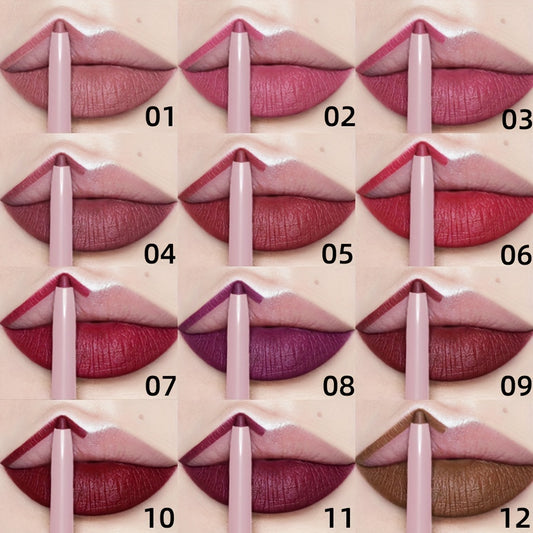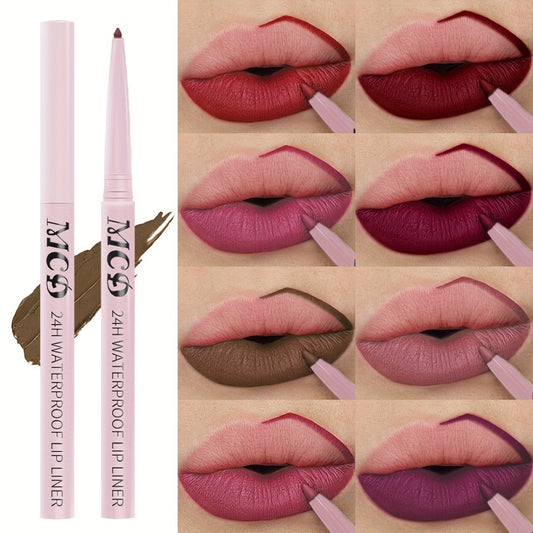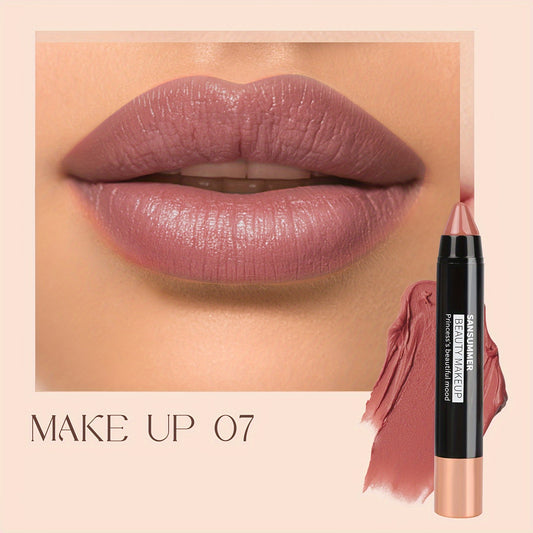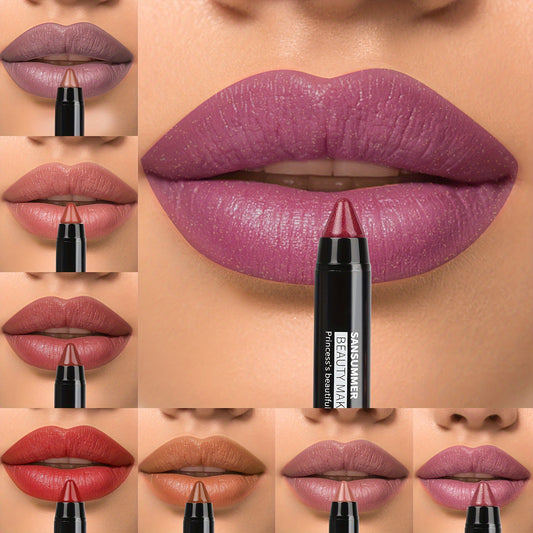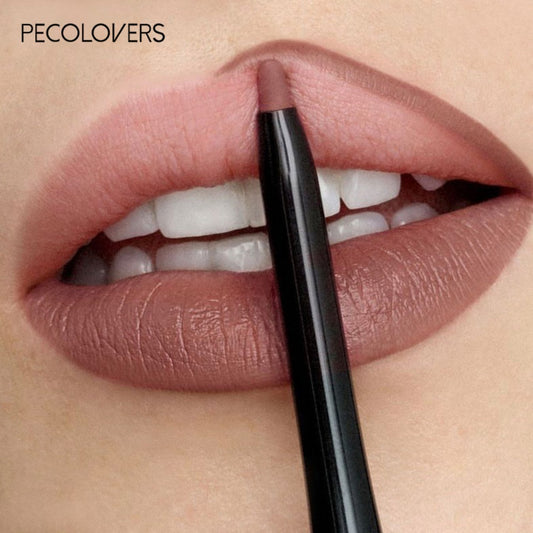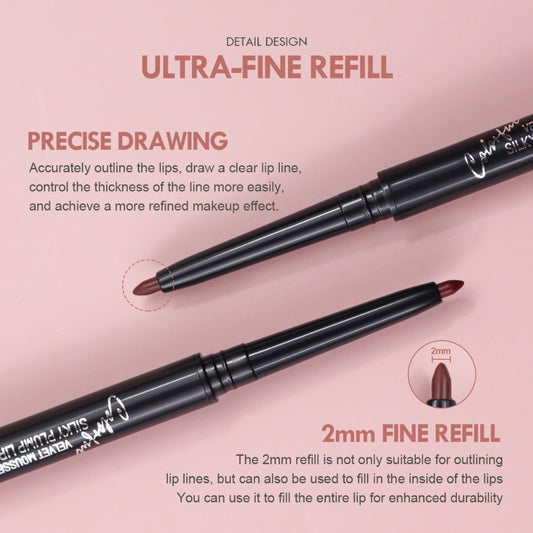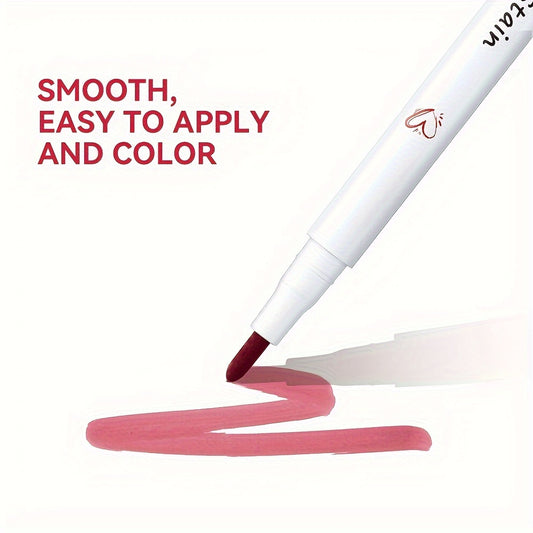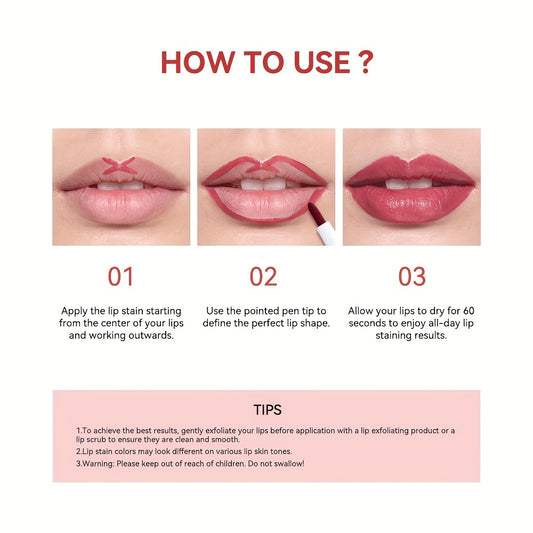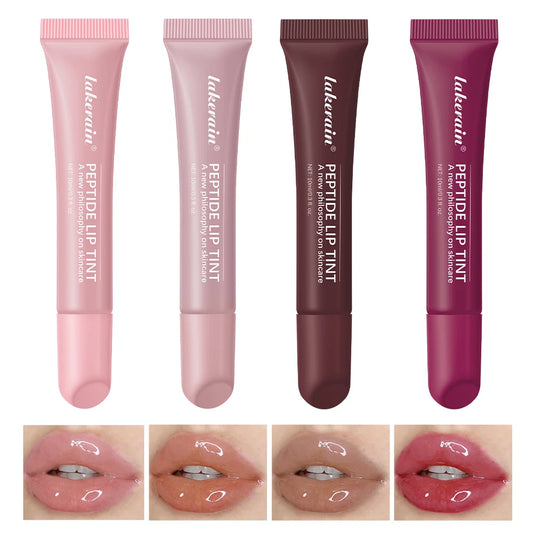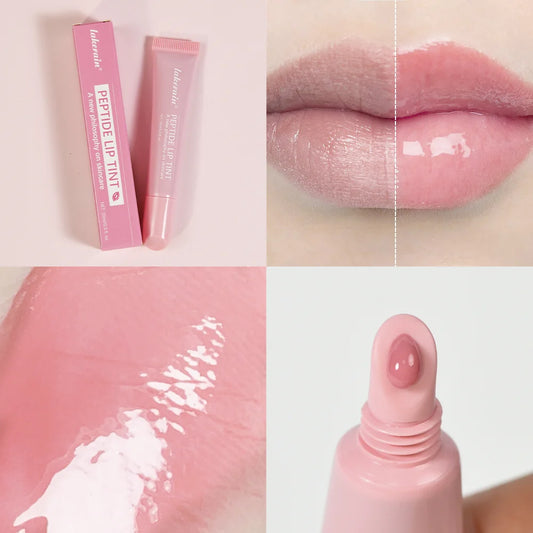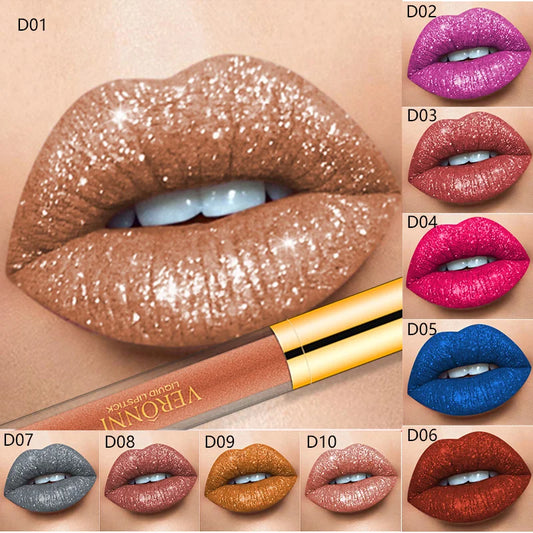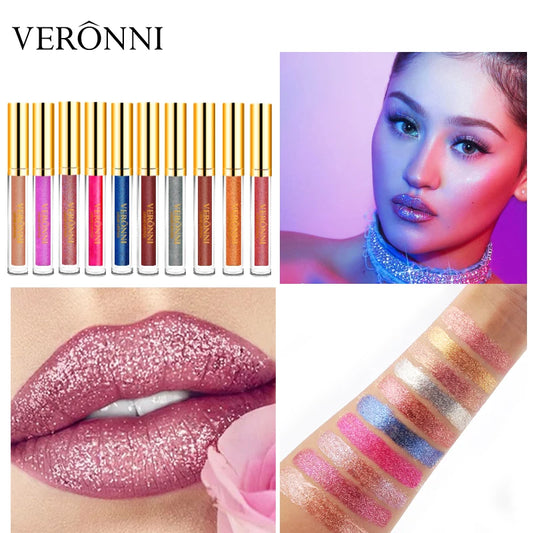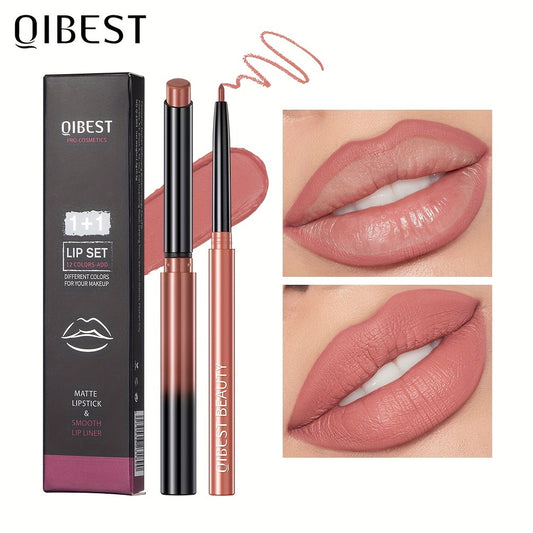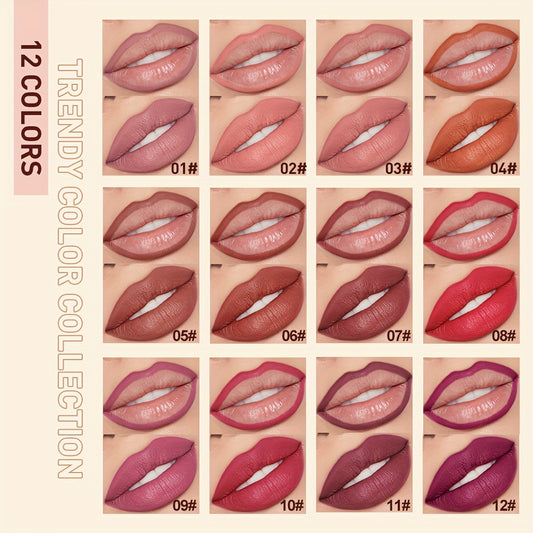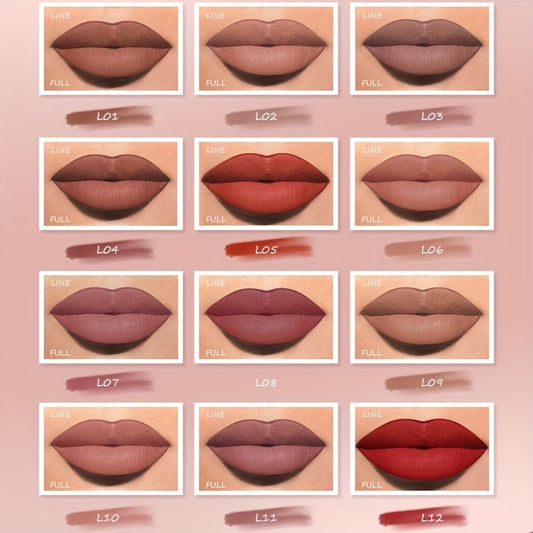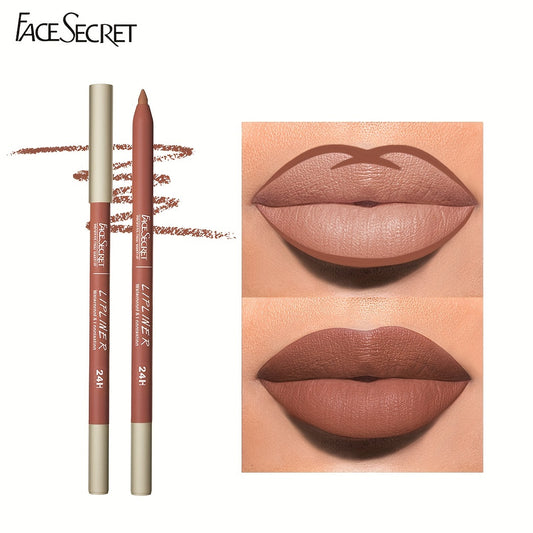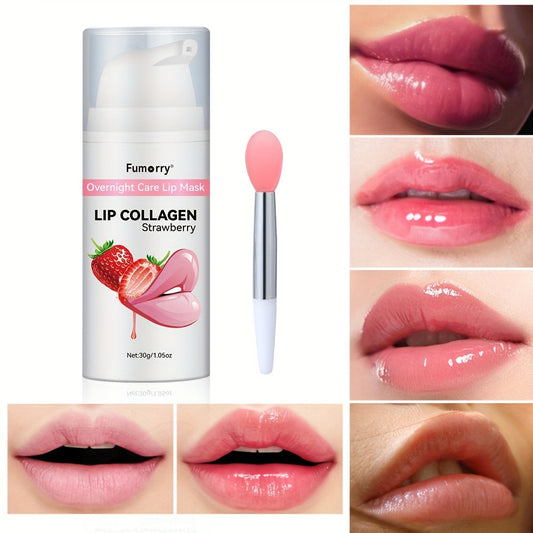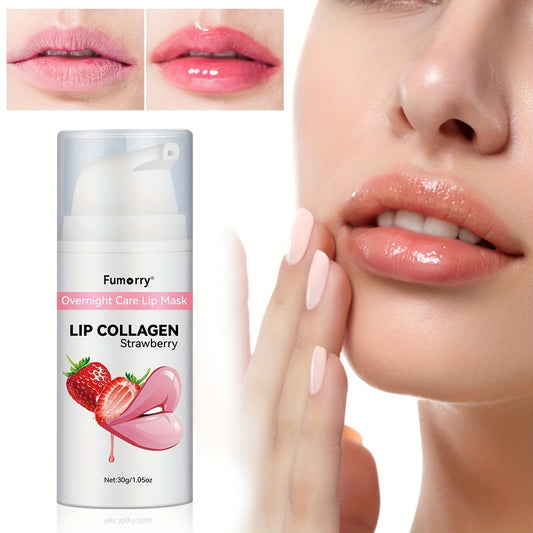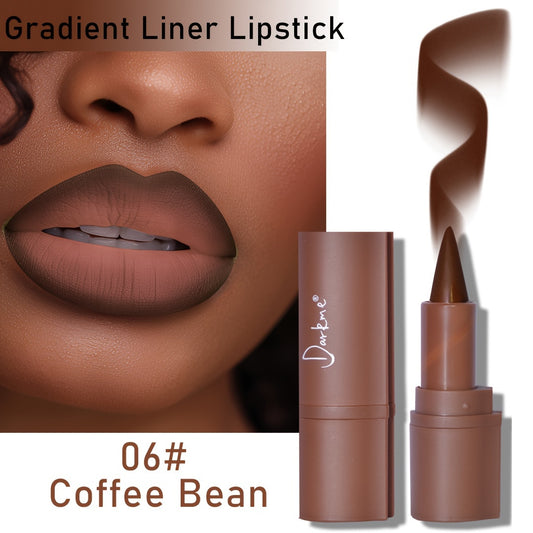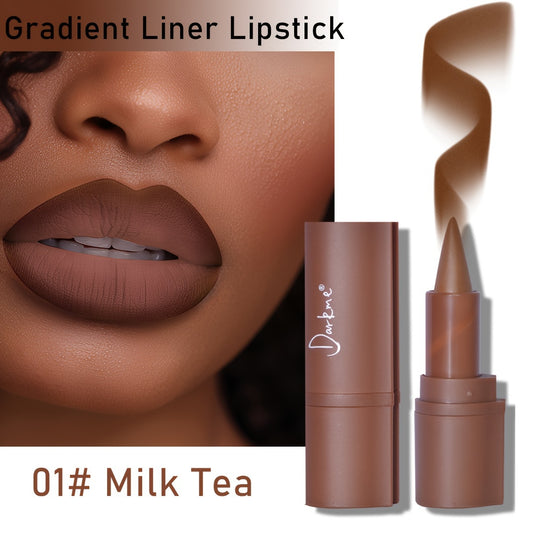Unveiling the Ingredients: What Lip Gloss Is Made Of
Share
Ever wonder what makes your lip gloss so shiny and smooth? It's more than just a pretty color. From the stuff that keeps your lips soft to the things that make them sparkle, a bunch of different ingredients come together to create that perfect gloss. Let's break down what lip gloss is made of and see how it all works.
Key Takeaways
- Lip gloss uses special oils and butters to keep your lips from getting dry.
- Ingredients like glycerin help your lips stay hydrated and look full.
- Shimmer and color come from things like mica and different color powders.
- Waxes and other thickeners give lip gloss its smooth feel and help it stay on.
- Flavors and scents are added to make using lip gloss a nice experience.
Essential Emollients for Lip Hydration
Lip gloss isn't just about shine; it's also about keeping your lips healthy and hydrated. That's where emollients come in. These ingredients are the workhorses of lip care, softening and smoothing the skin to prevent dryness and cracking. Think of them as a protective barrier, locking in moisture and keeping your pout looking its best.
Jojoba Oil's Nourishing Properties
Jojoba oil is a fantastic emollient because it closely mimics the natural oils our skin produces. This means it's easily absorbed and won't leave a greasy residue. It's also packed with vitamins and minerals that nourish the lips, promoting a healthy, supple appearance. I've noticed that when I use a lip gloss with jojoba oil, my lips feel softer and smoother for longer. It's a great option, especially during the colder months when lips tend to get extra dry. You can find vegan lip balms with jojoba oil.
Coconut Oil for Lasting Moisture
Coconut oil is another popular choice for lip gloss formulations, and for good reason. It's rich in fatty acids that provide intense hydration, helping to prevent moisture loss and keep lips feeling soft and plump. Plus, it has a lovely, subtle scent that many people find appealing. I like to use coconut oil-based lip products at night as an overnight treatment for extra dry lips. It's important to note that some people may be sensitive to coconut oil, so it's always a good idea to do a patch test before applying it liberally.
Castor Oil's Humectant Action
Castor oil is a bit of a powerhouse ingredient in the lip gloss world. It's not only an emollient, but also a humectant, meaning it attracts moisture to the lips. This dual action helps to keep lips hydrated and prevent them from drying out. Castor oil also has a naturally glossy texture, which contributes to the overall shine of the lip gloss. It's a common ingredient in many formulations, and you'll often see it listed near the top of the ingredient list. It's also a natural occlusive ingredient, like shea butter.
Emollients are a key component in lip gloss formulations, providing essential hydration and protection for the lips. They work by creating a barrier that prevents moisture loss and keeps lips feeling soft, smooth, and healthy. Choosing lip glosses with high-quality emollients is a simple way to maintain a beautiful and comfortable pout.
Humectants: Locking in Lip Moisture
Okay, so we've talked about the stuff that makes lip gloss feel good, but what about keeping your lips actually hydrated? That's where humectants come in. These are the ingredients that draw moisture from the air and lock it into your lips. Think of them as tiny sponges that keep your pout plump and happy. It's not just about shine; it's about health!
Glycerin's Hydrating Power
Glycerin is like the workhorse of humectants. It's cheap, effective, and you'll find it in pretty much everything. It's a clear, odorless liquid that pulls water from the environment into your skin. It's not a fancy ingredient, but it gets the job done. I've noticed that lip products with glycerin tend to feel a bit sticky, but that's a small price to pay for hydrated lips. It's also good to know that glycerin works best in humid environments, so if you live in a dry climate, you might need to pair it with an occlusive ingredient to prevent it from drawing moisture out of your lips.
Hyaluronic Acid for Plumpness
Hyaluronic acid (HA) is the rockstar of the skincare world, and for good reason. It's a molecule that can hold up to 1,000 times its weight in water, making it an amazing hydrator. It's naturally found in our bodies, where it is used mainly to provide hydration in the skin and to provide cushioning in the joints. When applied to your lips, it draws in moisture and makes them look fuller and plumper. It's a bit more expensive than glycerin, but the results are worth it, in my opinion. I've found that hyaluronic acid is especially effective when used in combination with other hydrating ingredients like shea butter.
I've been experimenting with different lip gloss formulas lately, and I've found that the key to long-lasting hydration is to combine humectants with emollients and occlusives. Humectants draw in the moisture, emollients soften and smooth the skin, and occlusives create a barrier to prevent moisture loss. It's all about finding the right balance for your lips.
Achieving Shimmer and Vibrant Color
Okay, so what really makes lip gloss lip gloss? It's gotta be that shimmer and color, right? It's what separates it from just plain old lip balm. Let's break down the ingredients that give us that perfect pout.
Mica for a Luminous Finish
Mica is like, the secret weapon for that glossy shine. It's a mineral that reflects light, giving your lips a subtle sparkle. Think of it as tiny little mirrors bouncing light all over the place. It's what makes your lips look so juicy and plump. Plus, it comes in different particle sizes, so you can get anything from a soft shimmer to a full-on glitter bomb. I personally prefer the subtle shimmer, but hey, to each their own!
Pigments for Diverse Hues
Obviously, you need pigments to get that perfect color. These can be synthetic or natural, and they come in literally every shade imaginable. It's pretty cool how they mix different pigments to get the exact color you want. I read somewhere that some pigments even come from fruits and flowers! How cool is that? It's all about finding the right balance to create a shade that complements your skin tone and makes you feel amazing. I love a good berry shade for everyday wear, but sometimes you just gotta go bold with a classic red. Speaking of which, I've been meaning to try out some custom makeup products to define my brand.
Finding the right pigment is key. Too much and you'll look like you're wearing clown makeup. Too little and you might as well just stick with clear gloss. It's a delicate balance, but when you get it right, it's magic.
Binding Agents and Thickeners for Texture
So, you know how lip gloss isn't just a watery mess? That's thanks to binding agents and thickeners! These ingredients are super important because they give lip gloss its texture and make sure it stays on your lips instead of sliding right off. They're what separate a good lip gloss from a bad one, honestly. These components ensure the gloss remains in place and applies smoothly.
Beeswax for Creamy Consistency
Beeswax isn't just for candles! It's a natural ingredient that helps solidify lip gloss, giving it that creamy, velvety texture we all love. Plus, it acts like a protective barrier, which is great because it helps prevent moisture loss. Think of it as a natural way to keep your lips soft and nourished. It's a pretty common ingredient, and for good reason. It's natural and it works!
Lanolin as a Natural Emulsifier
Lanolin, which comes from sheep's wool, is a natural emulsifier and thickener. It helps blend all the different parts of the lip gloss together, making sure everything mixes well. It also gives the gloss a luxurious feel and helps lock in moisture. Some people might be sensitive to it, but it's generally considered a good ingredient for keeping lips hydrated. It's been used in lip care products for ages.
Polybutene for Glossy Appearance
Polybutene is a light-colored mineral oil that doesn't dry out, and it's a key ingredient for that super glossy look we all want. It's what makes your lips look extra shiny and plump. It's also pretty good at keeping the gloss on your lips for a decent amount of time. It's one of those ingredients that you might not know about, but it's doing a lot of the heavy lifting when it comes to the overall look and feel of the lip gloss.
Finding the right balance of these ingredients is key. Too much of one thing, and you might end up with a lip gloss that's too thick or too sticky. Too little, and it'll be too runny. It's all about getting that perfect consistency for a comfortable and long-lasting wear.
Enhancing the Sensory Experience: Flavors and Fragrances
Lip gloss isn't just about looks; it's also about how it feels and tastes! That's where flavors and fragrances come in. They can really make applying lip gloss a more enjoyable experience. It's like a little treat for your senses!
Fruity Flavors for a Sweet Treat
Fruity flavors are super popular in lip gloss. Think juicy berries, tropical fruits – anything that gives a sweet and refreshing taste. It's like a little burst of summer on your lips! I personally love a good strawberry or mango flavored gloss. It just makes me feel happy. Plus, it's a fun way to add a little something extra to your day. You can find a wide range of lip gloss colors to match your favorite fruit flavors.
Minty Freshness for a Cooling Sensation
If you're not into sweet, minty lip glosses are a great alternative. They give you that cooling, fresh feeling, almost like you just brushed your teeth. It's invigorating! I find that minty glosses are especially nice in the summer when you want something to refresh you. They can also give your lips a slight tingling sensation, which some people really enjoy. Here are some benefits of minty lip gloss:
- Provides a cooling sensation
- Offers a fresh, clean feeling
- Can help to wake you up
Floral Scents for Elegance
For a more sophisticated vibe, floral-scented lip glosses are the way to go. Whether it's a delicate rose or a vibrant jasmine, these scents add a touch of luxury to your makeup routine. It's like wearing a subtle perfume on your lips! I think floral scents are perfect for special occasions or when you just want to feel a little more put-together. They're also great if you prefer a more subtle scent compared to fruity or minty options. The right lip care products can really elevate your look.
I think the best part about flavors and fragrances in lip gloss is that they can really boost your mood. A little bit of sweetness or freshness can make a big difference in how you feel throughout the day. It's a small detail, but it can have a big impact.
The Manufacturing Process of Lip Gloss
Raw Material Procurement
So, where does lip gloss even begin? It all starts with getting the right stuff. We're talking about sourcing high-quality ingredients. Think oils (like castor and jojoba), waxes (beeswax is a classic), pigments for color, and those yummy flavoring agents. Manufacturers usually want natural, skin-safe ingredients these days, which is a good thing. It's like baking a cake; you need good ingredients to get a good result. This is where the lip gloss ingredients are carefully selected.
Formulation Development
Okay, now for the science-y part. This is where chemists come in. They're like the chefs of the cosmetic world, creating the perfect recipe. They need to figure out the right balance of ingredients to get the consistency, color, and shine just right. It's a lot of mixing different oils, waxes, and pigments in precise amounts. Then, they test it, test it, and test it again to make sure it meets all the quality standards. It's not as simple as throwing stuff together; it's a delicate process.
The Mixing Process
Time to get mixing! Once the formula is set, all the ingredients go into a big mixing tank. Usually, the mixture is heated up to make sure the waxes melt completely and everything blends together nicely. It's kind of like making a sauce; you need heat to get everything to combine properly. The mixing process is crucial for a smooth, consistent product.
Think of it like this: you're making a smoothie. You can't just throw the fruit and yogurt in a cup and expect it to be perfect. You need a blender to mix it all up until it's smooth and creamy. The mixing process in lip gloss manufacturing is the same idea, just on a much larger scale.
Ever wonder how that shiny lip gloss gets made? It's a cool process, starting with mixing and heating, then adding all the pretty colors and scents. Finally, it's poured into those little tubes you love. Want to see more about how we make our amazing lip gloss? Head over to our website!
Conclusion
So, there you have it. Lip gloss, it's way more than just some shiny stuff you put on your lips. We've gone through all the different things that make it up, from the oils that keep your lips soft to the shimmery bits that make them pop. It's pretty cool how all these ingredients work together to give us that perfect gloss. Knowing what's in your lip gloss can help you pick out the best one for you. It's all about finding what feels good and looks good, right?
Frequently Asked Questions
What are the main things in lip gloss?
Lip gloss is usually made from a mix of oils, waxes, and colors. These ingredients work together to give your lips shine, moisture, and a hint of color. Sometimes, special ingredients are added for extra sparkle or a nice scent.
Is whale sperm really in lip gloss?
No, that's just a myth! Whale sperm is not an ingredient in lip gloss. This is a common misunderstanding. Lip gloss uses safe, cosmetic-grade ingredients that are tested for use on your skin.
Are there natural ingredients in lip gloss?
Many lip glosses use natural stuff like jojoba oil, coconut oil, beeswax, and lanolin. These come from plants or animals and help make the gloss smooth and moisturizing. Some glosses also use natural colors from fruits or minerals.
Why does lip gloss sometimes feel sticky?
Some lip glosses can be sticky because of certain ingredients that help them stay on your lips and give them that shiny look. Polybutene, for example, is often used to make glosses last longer and look super glossy, but it can also feel a bit sticky.
Does lip gloss have flavors or smells?
Yes, many lip glosses have flavors and scents added to make them more fun to wear. These can be fruity, minty, or even smell like flowers. They are usually made from special food-grade or cosmetic-grade ingredients that are safe for your lips.
How is lip gloss made in a factory?
Lip gloss is made in factories by carefully mixing all the ingredients together. First, the ingredients are measured out, then they are heated and blended until they are smooth. After that, the mixture is poured into tubes or pots and left to cool down before being packaged.

